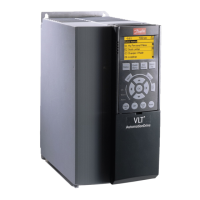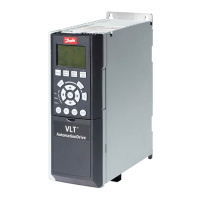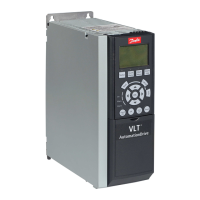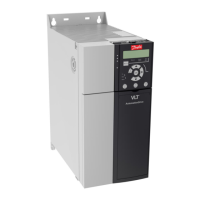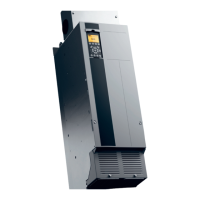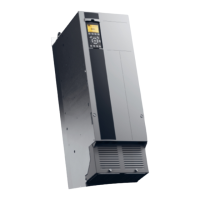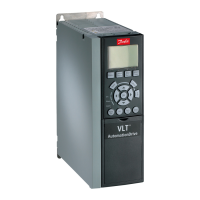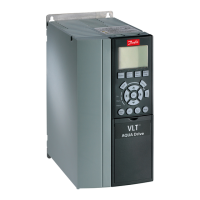common coupling where all loads are connected together
is PCC2. Each load is connected through cables that have
an impedance Z
1
, Z
2
, Z
3
.
Illustration 3.25 Small Distribution System
Harmonic currents drawn by non-linear loads cause
distortion of the voltage because of the voltage drop on
the impedances of the distribution system. Higher
impedances result in higher levels of voltage distortion.
Current distortion relates to apparatus performance and it
relates to the individual load. Voltage distortion relates to
system performance. It is not possible to determine the
voltage distortion in the PCC knowing only the load’s
harmonic performance. In order to predict the distortion in
the PCC the configuration of the distribution system and
relevant impedances must be known.
A commonly used term for describing the impedance of a
grid is the short circuit ratioshort circuit ratio R
sce
, defined
as the ratio between the short circuit apparent power of
the supply at the PCC (S
sc
) and the rated apparent power
of the load (S
equ
).
R
sce
=
S
ce
S
equ
where
S
sc
=
U
2
Z
supply
and
S
equ
=
U
×
I
equ
The negative effect of harmonics is twofold
•
Harmonic currents contribute to system losses (in
cabling, transformer)
•
Harmonic voltage distortion causes disturbance
to other loads and increase losses in other loads
Illustration 3.26 Negative Effects of Harmonics
3.6.2 Harmonic Limitation Standards and
Requirements
The requirements for harmonic limitation can be:
•
Application specific requirements
•
Standards that must be observed
The application specific requirements are related to a
specific installation where there are technical reasons for
limiting the harmonics.
Example: a 250 kVA transformer with two 110 kW motors
connected is sufficient if one of the motors is connected
directly on-line and the other is supplied through a
frequency converter. However, the transformer will be
undersized if both motors are frequency converter
supplied. Using additional means of harmonic reduction
within the installation or choosing low harmonic drive
variants makes it possible for both motors to run with
frequency converters.
There are various harmonic mitigation standards,
regulations and recommendations. Different standards
apply in different geographical areas and industries. The
following standards are the most common:
•
IEC61000-3-2
•
IEC61000-3-12
•
IEC61000-3-4
•
IEEE 519
•
G5/4
See the AHF005/010 Design Guide for specific details on
each standard.
In Europe, the maximum THVD is 8% if the plant is
connected via the public grid. If the plant has its own
transformer, the limit is 10% THVD. The VLT
®
AutomationDrive is designed to withstand 10% THVD.
Introduction
VLT
®
AutomationDrive FC 300 Design Guide, 0.25-75 kW
42 MG33BE02 - VLT
®
is a registered Danfoss trademark
3
3
http://www.RSPSupply.com/p-21462-Danfoss-131B8966-VLT-Automation-VT-Drive-VFD-FC301-230V-5-HP.aspx

